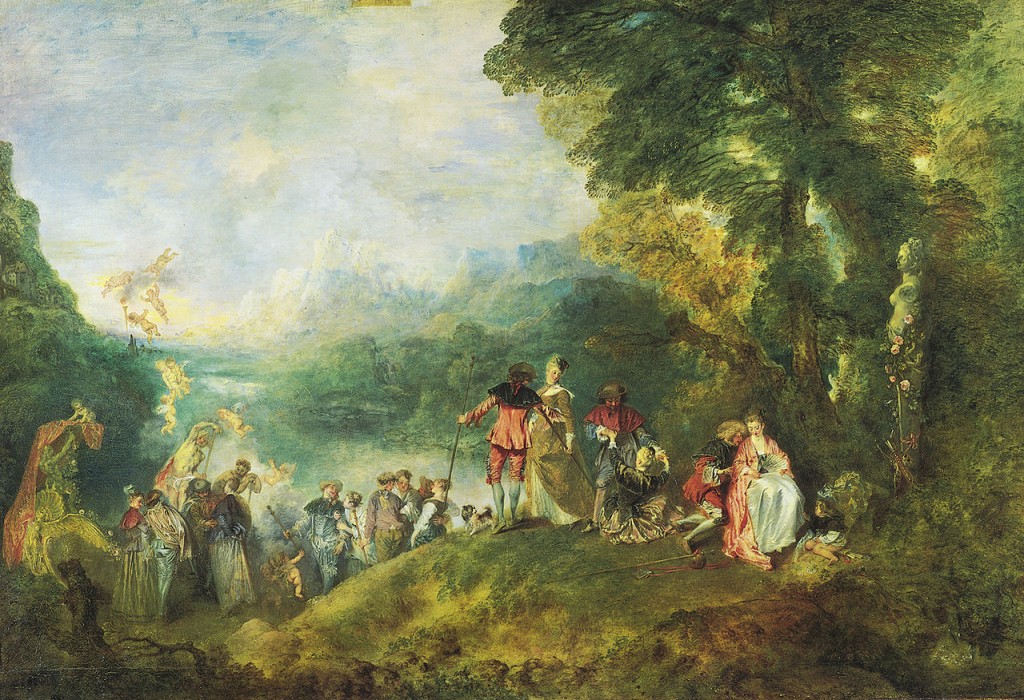Rameau: Suite from Castor et Pollux

Elegant, refined, ornamented, sensitive – all terms applied to the mid-18th-century Rococo style. The 1717 painting by Jean-Antoine Watteau epitomizes the style. It depicts a fête galante on the island of Cythera, the birthplace of Venus, with happy, carefree aristocrats enjoying the clean, leafy outdoors.

In architecture, the Rococo would be characterized by elaborate carvings, curved forms, and leaf motifs.
Music naturally kept pace with these fashion trends, and the descriptive terms applicable to Watteau and other forms of Rococo art apply to the compositional style of the time. In Germany it was Empfindsamkeit (sensitive style) and in France, the style galante (elegant style). The dense polyphony of the late-Baroque composers like J.S. Bach was replaced with a style intended to have more immediate appeal.
One of the composers closely associated with the style galante is Jean-Pillippe Rameau (1683-1764). As a music theorist, I knew Rameau for his important treatise on harmony before paying much attention to his music. His most successful works were his operas, in particular his opéra-ballets with elements of comedy and a greater amount of dancing (dance was always an important element of French opera). Castor et Pollux (1737) followed the more established and serious form of tragédies en musique with a theme based on Classical mythology. But at the time, a tragedy could still have a happy ending and bouncy music. I think you’ll find it has the immediate appeal that the composers of the era sought.
This performance of the Suite from Castor and Pollux comes from Buskaid, a charitable organization supporting the development of musically talented young string players from the townships of South Africa. The organization is obviously fulfilling its mission.



